Modest Mussorgsky’s Pictures at an Exhibition – each track inspired by the interpretation of the Ravel orchestration by Isao Tomita and performed and recorded by myself.
Mussorgsky completed the piano work in 1874 and is based on pictures by the artist, architect, and designer Viktor Hartmann which was a friend of the composer.
I used a scanned copy of the 1922 Ravel score to achieve this work. I got the score from the IMSPL website. I do not consider this complete as I want to make some changes to a few of the instruments and effects to better represent the score.
This is my interpretation of the score, and each instrument part, 52 in total, has been faithfully entered, note for note, into my computer so that I could produce this work. Any mistakes are my own.
The album tracks are accompanied by pictures, either generated by AI or original Hartmann works. I hope that you enjoy it.
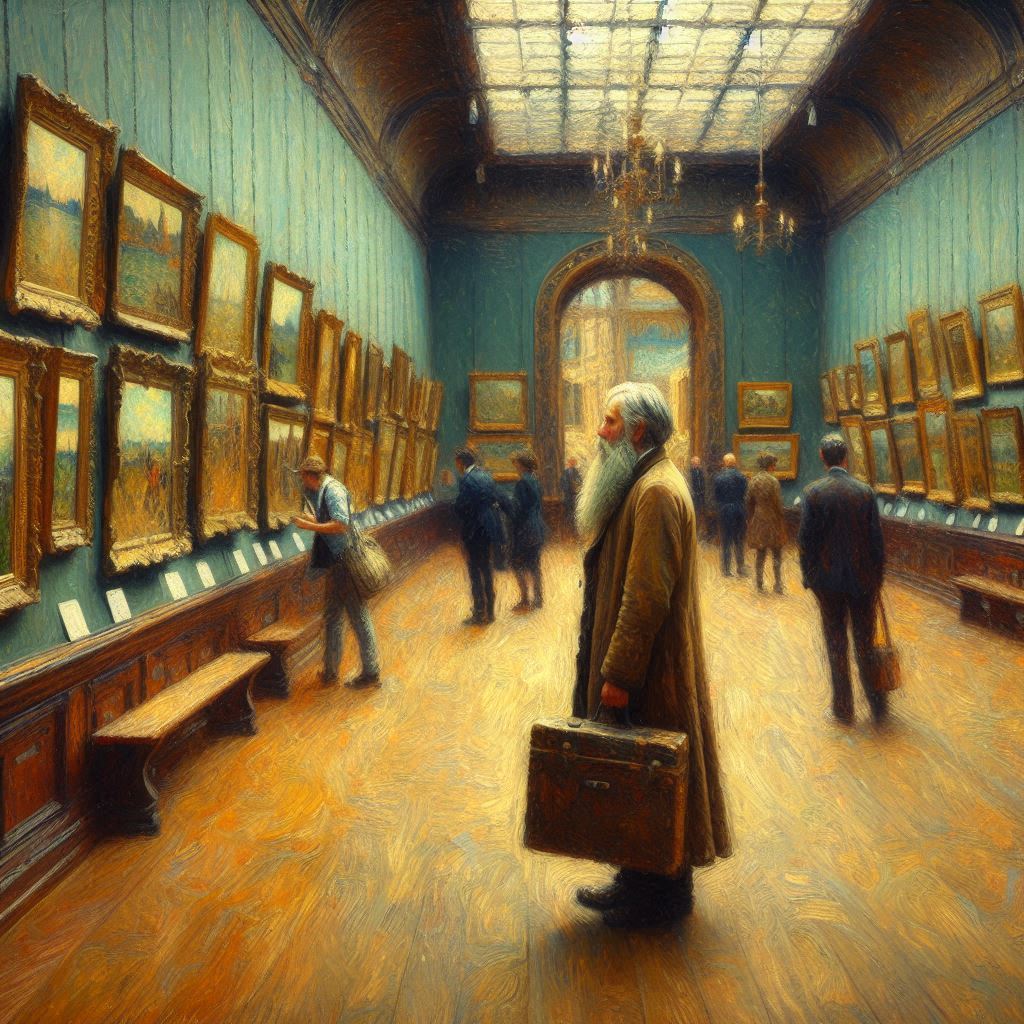
Promenade
Mussorgsky is roving through the exhibition, now leisurely, now briskly in order to come close to a picture that had attracted his attention, and at times sadly, thinking of his departed friend. The music is rendered in asymmetrical meter, alternating 5/4 and 6/4 measures to give it a sense of movement. My rendition is nineteen tracks.
Bb – 5/4 and 6/4, Allegro giusto, nel modo russico; senza allegrezza, ma poco sostenuto

Gnomus – (The Gnome)
Stasov described the picture as “A sketch depicting a little gnome, clumsily running with crooked legs.” Hartman’s sketch is thought to have been a design of a nutcracker with large teeth. The notes leap and lurch depicting the movement of the gnome as he starts and stops, 18 tracks of audio to render.
Eb Minor – 3/4. Vivo and Meno mosso, pesante
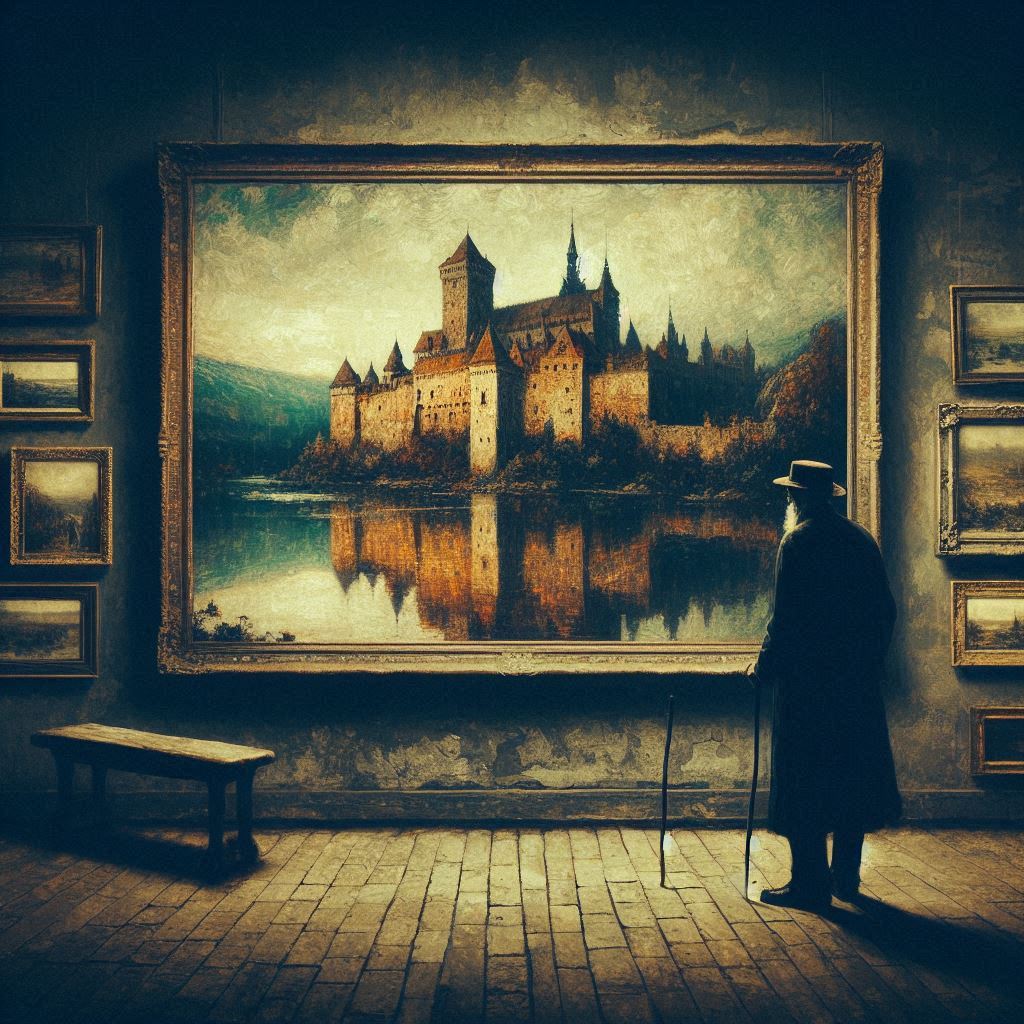
Promenade #2
The instructions on the piece tell the player to implement it “moderate and very delicate”. The piece is intended to depict the viewer moving from the picture of the Gnome to the picture of the old castle. I start bright in the piece but then trail to a slightly dark end symbolized by the bells and reverb. This is to foreshadow the next image.
A♭ major 5/4, 6/4/ Moderato commodo assai e con delicatezza

Il vecchio castello – The Old Castle
The painting is said to depict a medieval castle before which a troubadour sings a song. Hartman usually put figures in his drawings to show scale, Ravel choose a bassoon and alto saxophone duet. I chose a tempting deep voice vocalization with a filter to mimic singing. The instructions for the piece are to perform it “Very Signing and with pain”.
G# minor – 6/8. Andante molto cantabile e con dolore

Promenade #3
With more extroversion and weight than before. 8 measures, a short break between pictures. 12 tracks of audio.
B major – 5/4 6/4. Moderato non tanto, pesamente
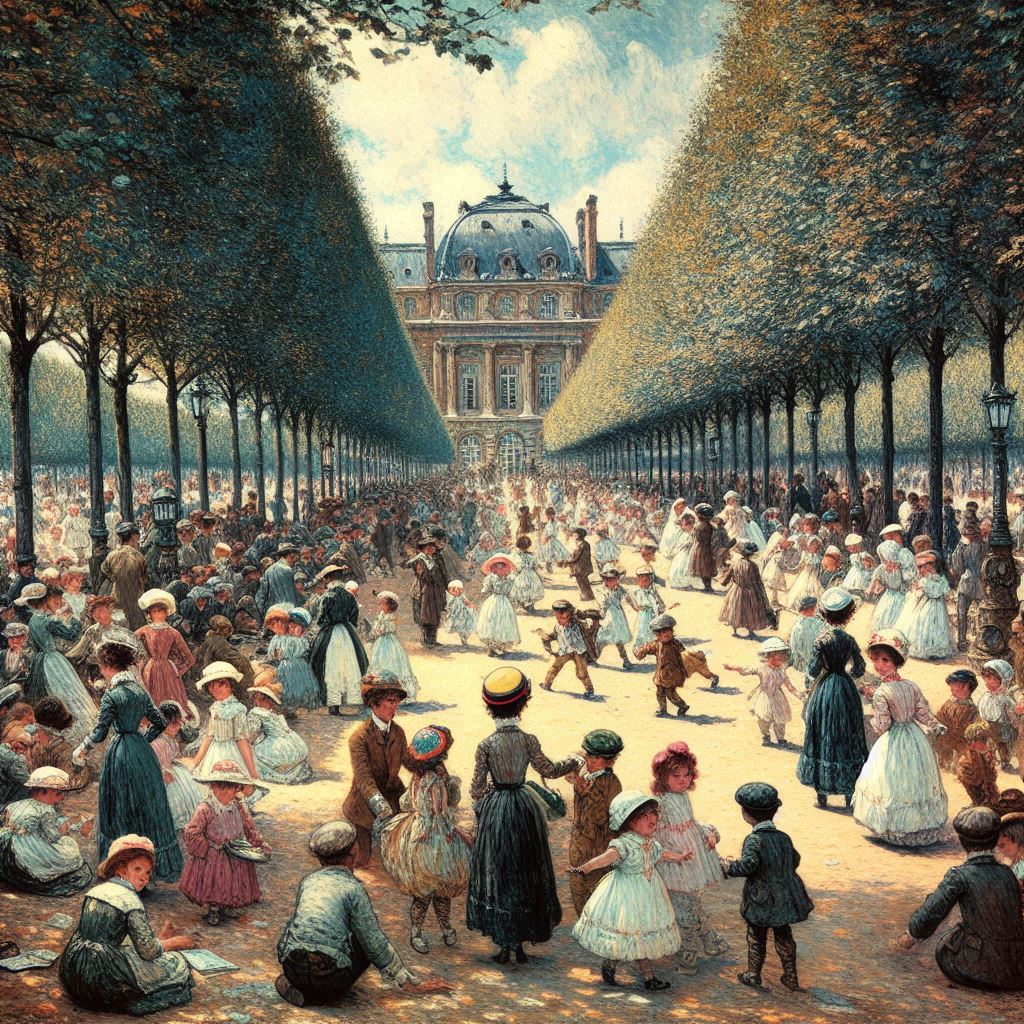
Tuileries – Children’s Quarrel after Games
This is described, by Stasov, as “An avenue in the garden of the Tuileries, with a swarm of children and nurses”. The Tuileries Garden is near the Louve museum in France.
B Major – 4/4. Allegretto non troppo, capriccioso
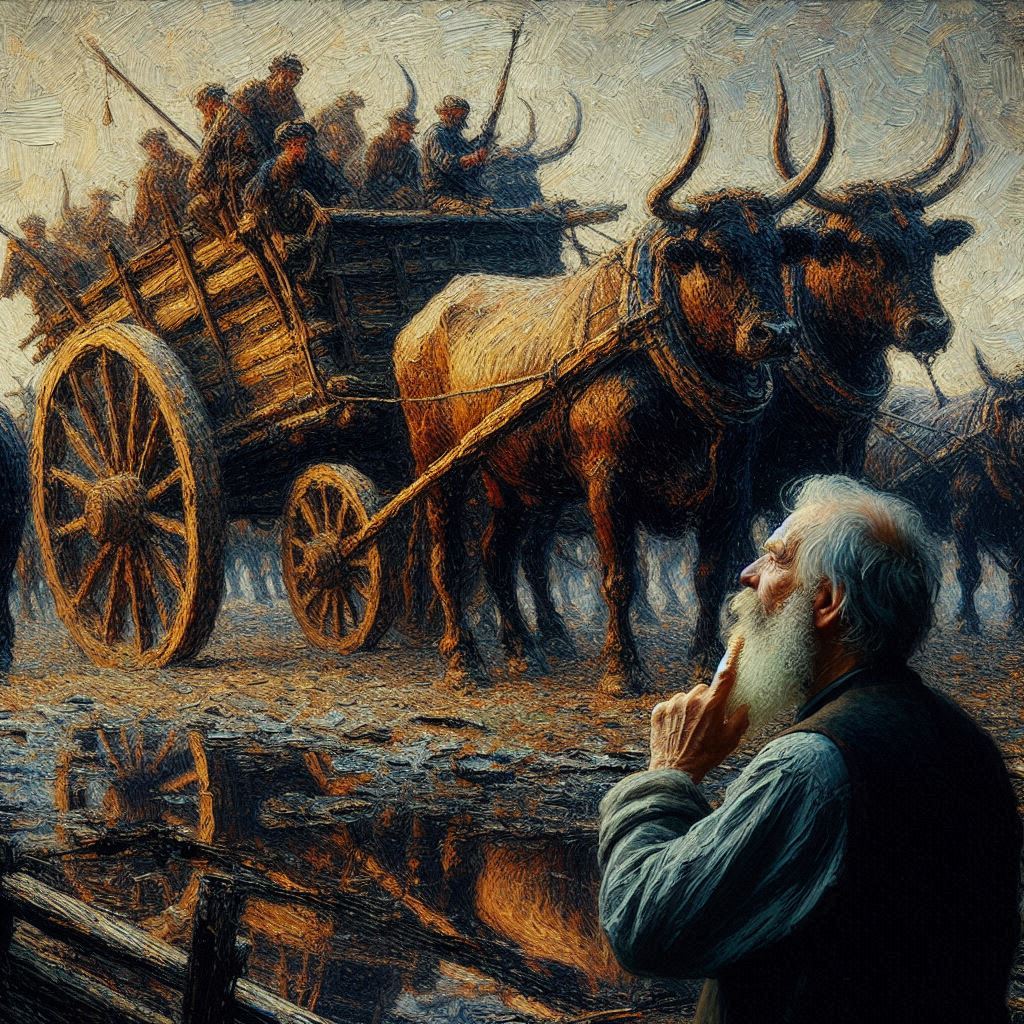
Byldo – Cattle
A Polish cart on enormous wheels, drawn by oxen. I feel that Mussorgsky wrote this to show the oxen far away, coming close and passing the observer and then passing beyond view. I tried to achieve that with my rendering. I added some industrial samples to create a “rhythm” track as piece really needed something to drive it. This addition gives it a “steam punk” drive so that instead of an oxen, we get a steam driven or industrial robotic oxen pulling our polish cart.
C# minor – 2/4. Sempre moderato, pesante
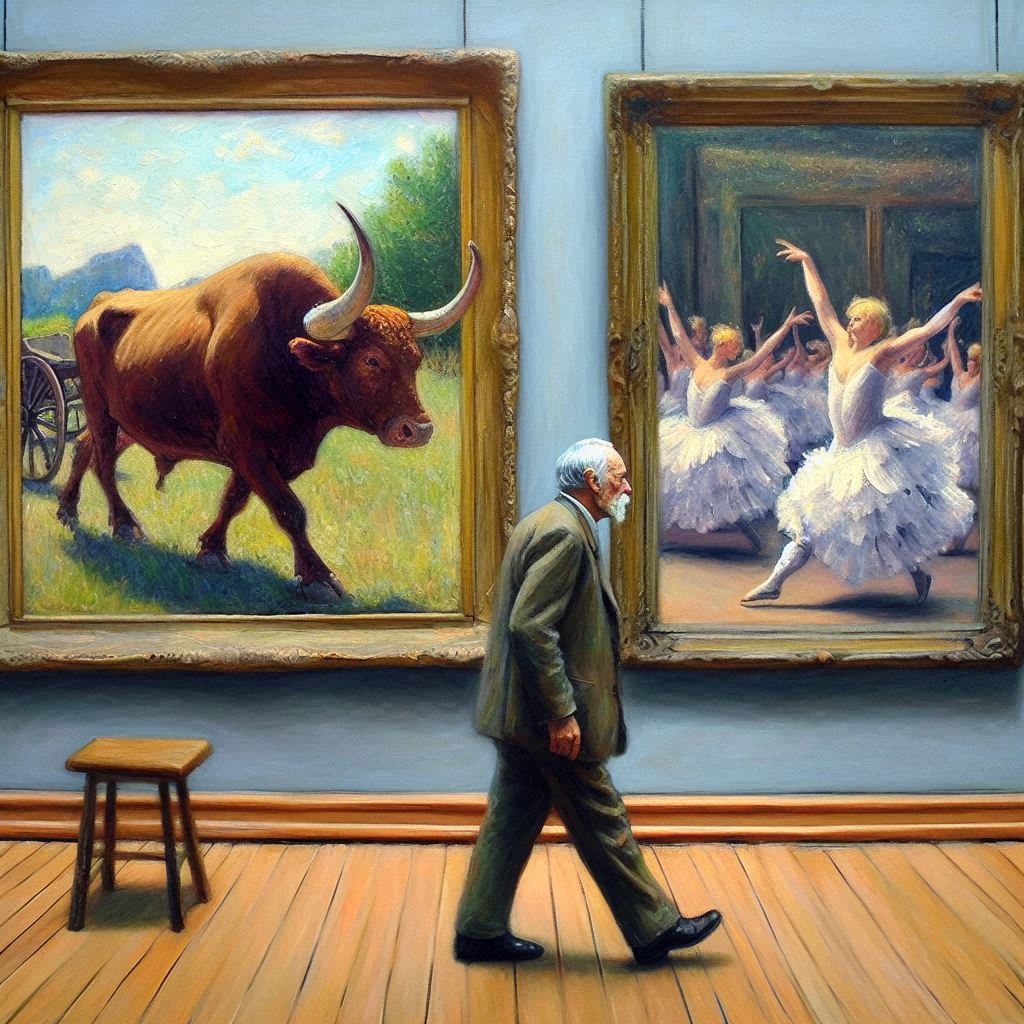
Promenade #4
Reflective of the main theme, but more tranquil. Only 10 measures, 14 tracks.
D minor, 5/4 6/4 7/4. Tranquillo
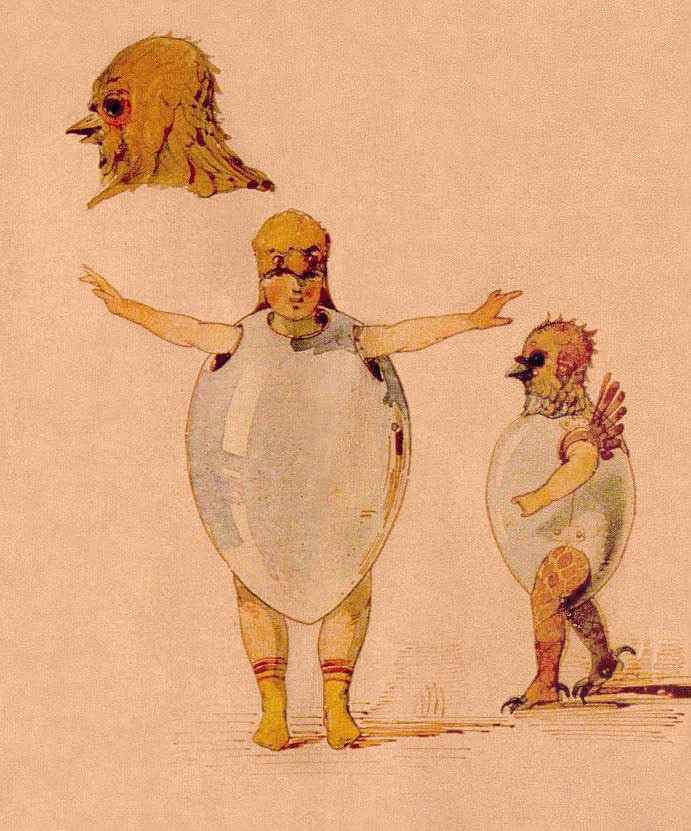
Balet nevylupivshikhsya ptentsov
Ballet of Unhatched Chicks
Hartmann’s design for the décor of a picturesque scene in the ballet Trilby. The original chics in the ballet were canaries.
F Major 2/4. Scherzino

Samuel Goldenberg Und Schmuyle
Two Polish Jews, Rich and Poor (Samuel Goldenberg and Schmuyle). The movement is thought to be based on two separate extant portraits.
Bb minor. 4/4 Andante. Grave energico and Andantino
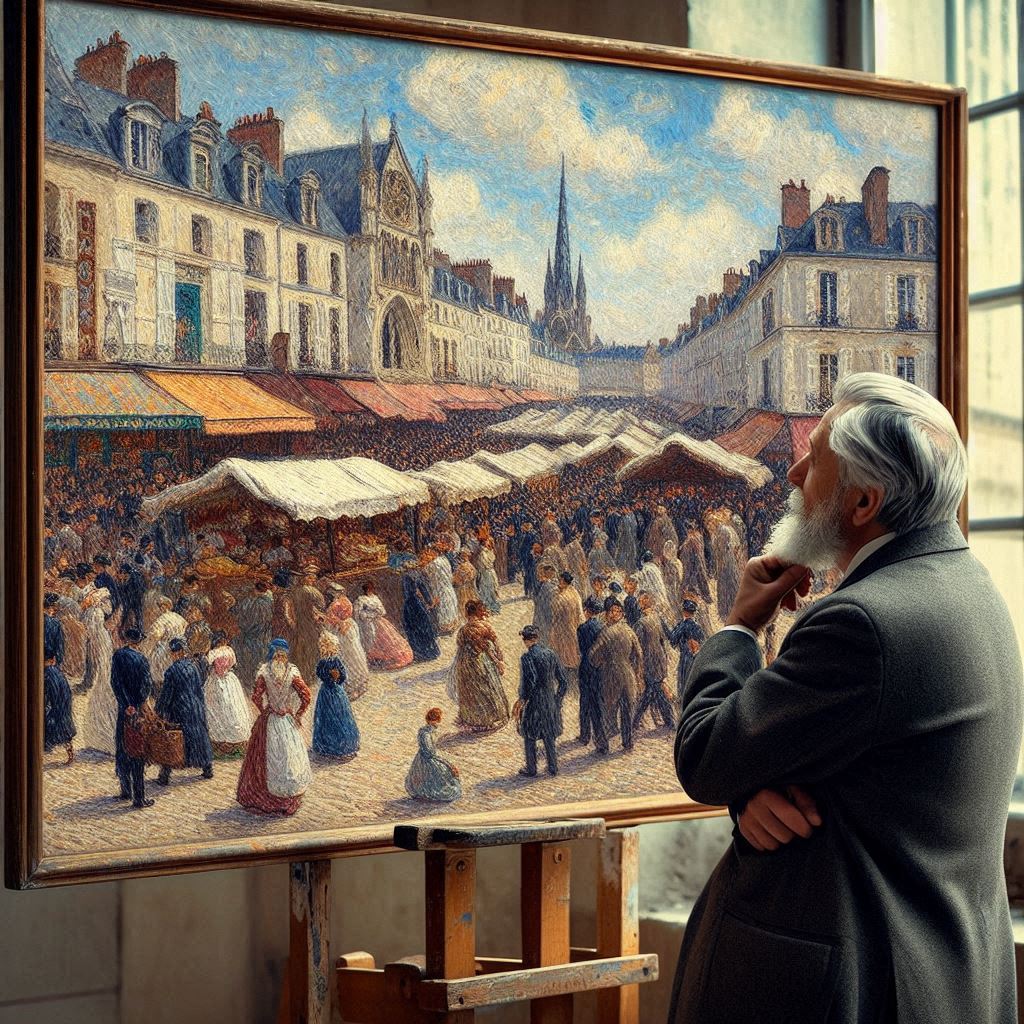
Limoges – Le marché
(La grande nouvelle)
French women quarrelling violently in the market.
Eb major – 4/4. Allegretto vivo, sempre scherzando
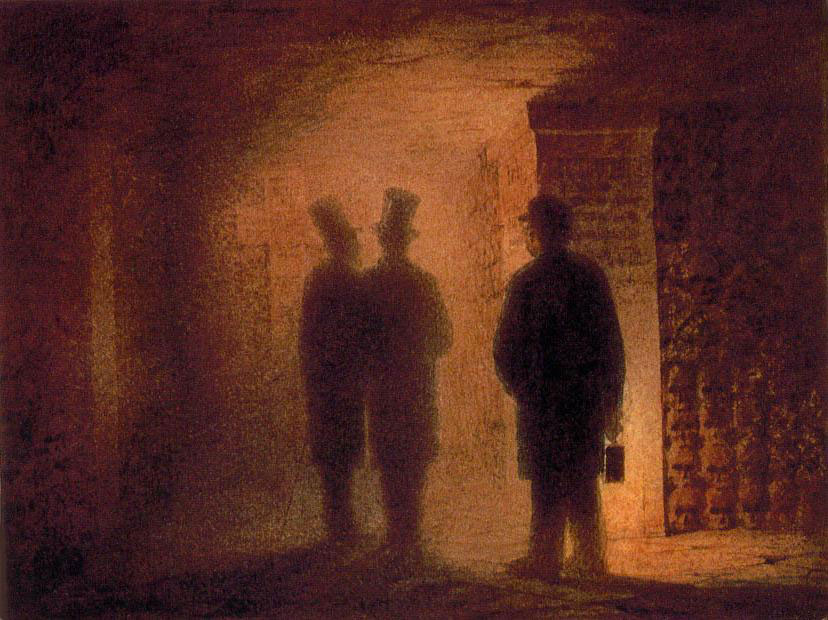
Sepulchrum Romanum
9 tracks of audio, depicts Hartmann’s descent into the Roman Catacombs by Lamplight.
B minor – 3/4. Largo
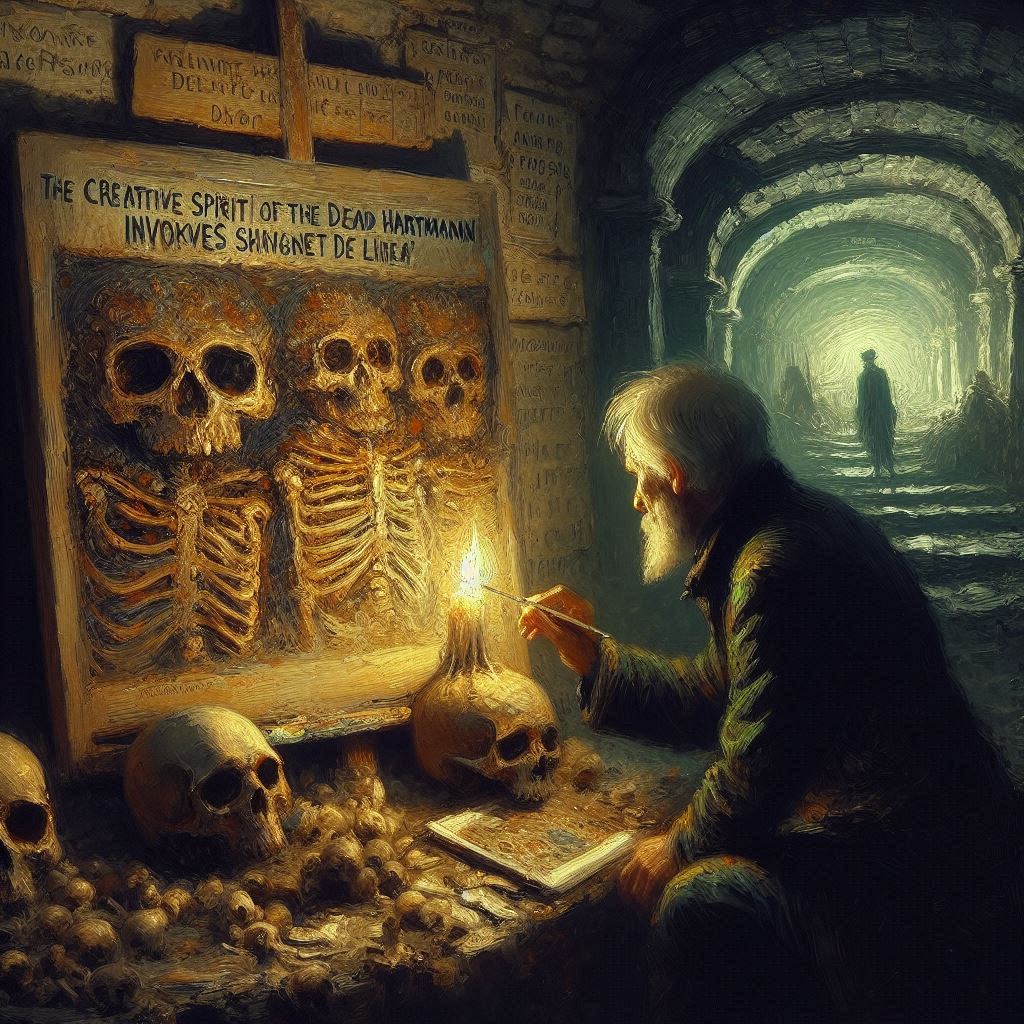
Con mortuis in lingua mortua
With the Dead in a Dead Language. Mussorgksy said of Hartman’s picture, “The creative spirit of the dead Hartmann leads me towards the skulls, invokes them; the skulls begin to glow softly.”
The picture is said to be a self-portrait of Hartmann descending into the Roman Catacombs via lamplight.
B minor – 6/4. Andante non troppo con lamento

The Hut on Hen’s Legs (Baba Yaga)
Hartmann’s drawing depicted a clock in the form of Baba Yaga’s hut on fowl’s legs. Mussorgsky added the witch’s flight in a mortar.”
Motives in this movement evoke the bells of a large clock and the whirlwind sounds of a chase. Structurally, the movement mirrors the grotesque qualities of “Gnomus” on a grand scale.
C Minor – 2/4. Allegro con brio, feroce and Andante mosso

The Bogatyr Gates – The Great Gate of Kiev
Rhe final track of Pictures at an Exhibition. Hartmann’s sketch was his design for city gates at Kiev in the ancient Russian massive style with a cupola shaped like a Slavonic helmet.
Bogatyrs are heroes that appear in Russian epics called bylinas. Hartmann designed a monumental gate for Tsar Alexander II to commemorate the monarch’s narrow escape from an assassination attempt on April 4, 1866.
Hartmann regarded his design as the best work he had done. His design won the national competition but plans to build the structure were later cancelled.
Eb Major. 2/4. Allegro alla breve. Maestoso, con grandezza
